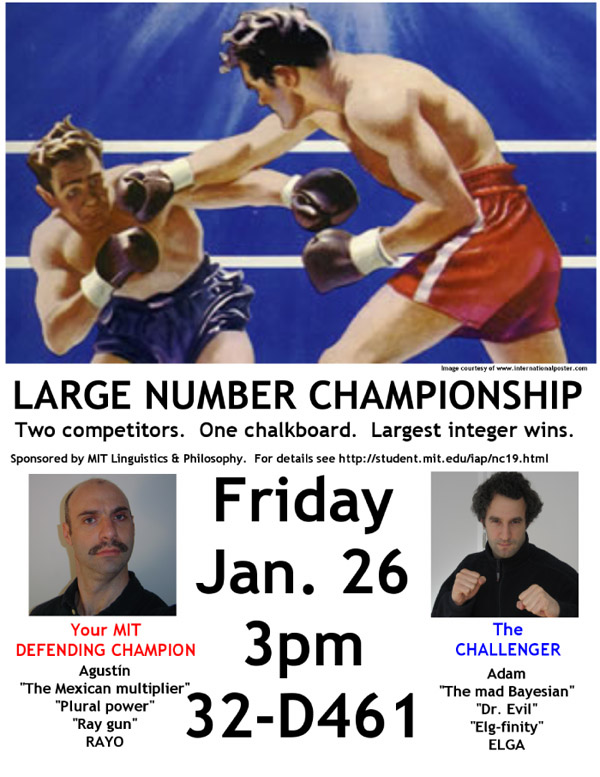June 12, 2008
·
logic, paradoxes, The Mathcast
One of the great discoveries of the twentieth century is that mathematics can describe the limits of mathematical thought! We’ll discuss some of these ideas from time to time in coming weeks. In this segment, we consider Alan Turing’s insightful question:
Can the answer to any mathematical question be computed?
Read the rest of this entry »
Permalink
April 17, 2008
·
Follow Up, guests, paradoxes
We present a recording of Raymond Smullyan’s lecture at the Gathering for Gardner, March 30, 2008; Newcomb’s paradox really is a stumper.
Permalink
March 26, 2008
·
answers, guests, logic, math puzzles, Mathfactor Events, paradoxes, The Mathcast
We discuss, among other things, whether all mathematicians are liars.
Send us your favorite paradoxes of this kind and we’ll report back on April 15.
Permalink
September 26, 2007
·
guests, infinity, logic, paradoxes, The Mathcast
What follows after 0, 1, 2, … , once you’ve managed to list every counting number?
Around 1875, Georg Cantor created — or discovered if you like — the transfinite ordinals : the list continues 0, 1, 2, …, then ω , ω + 1, ω + 2, etc, for quite a long long way. John H. Conway tells us about his Surreal Numbers , which add in such gems as
1 / √ ω
Check out Knuth’s Surreal Numbers, Conway & Guy’s Book of Numbers , or for more advanced users, Conway’s On Numbers and Games.
Permalink
May 6, 2007
·
answers, Follow Up, infinity, logic, paradoxes, The Mathcast
Amusingly, this problem has exactly the same solution as the proof that there are as many rational numbers as there are counting numbers. And the proof generalizes: one stork can catch three frogs, or ten or fifty.
Here are some bonus problems:
- The stork can catch the frog even if it can start at any rational number and hop any fixed rational distance each step.
- However, if the frog can start at any real number or hop any real distance, the stork has no strategy that guarantees a catch. This is, in effect, the same as proving that the real numbers are not countable.
Permalink
April 15, 2007
·
answers, Favorites, guests, infinity, logic, Mathfactor Events, numbers, paradoxes, The Mathcast
A contestant for our Million-Dollar-Give-Away sent in Rayo’s Number, hitherto the largest number ever used for any real purpose: to wit, winning the
LARGE NUMBER CHAMPIONSHIP

Check out the article by Scot Aaronson that inspired them to duke it out! And this thread on the math forum is quite interesting as well.
Permalink
April 1, 2007
·
numbers, paradoxes, The Mathcast
Our minds boggle as we continue our quest! This week we discuss the Knuth Arrow notation, for describing some really staggeringly large numbers. And yet we are still two weeks from talking about the largest number ever used for any real purpose!
We also discuss an April Fool’s paradox! Last week we said there were three errors on the Math Factor. But there were only two, so this announcement was one of the three errors! But then the announcement was correct! ETC.
Permalink
March 13, 2006
·
answers, logic, math puzzles, paradoxes, The Mathcast
Why 462 is the least interesting number less than 1000, and the students get a paradoxical pop quiz.
(plus, the answer to the census taker’s puzzle)
Permalink


 mathbun.com
mathbun.com